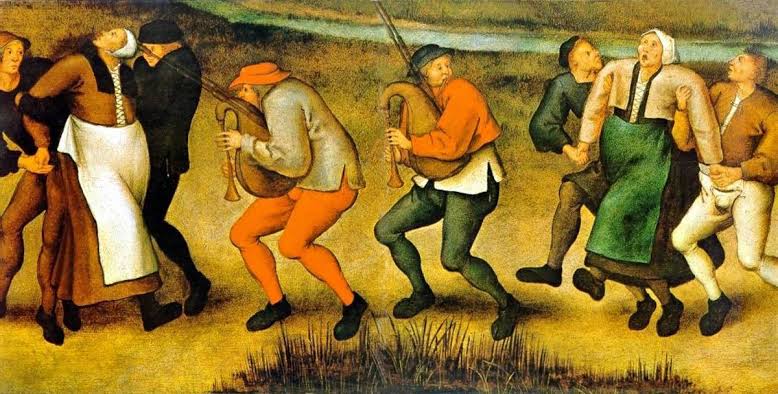The Dance Plague

The Plague of Dancing
We have read and heard about the epidemic of various diseases till today but in this mysterious world about five hundred years ago there was an epidemic which gave happiness instead of pain. This epidemic is called the epidemic of dancing. It spread to various parts of the Roman Empire from the fourteenth to the seventeenth centuries, but intensified in 1518. There is no concrete evidence of the number of people killed by the Strasbourg epidemic.
The Beginning
The plague spread to Strasbourg, then part of the Holy Roman Empire. Strasbourg is now the largest city and capital of the Grand Est Region of France.
The plague started when a woman name Frau Troffea stepped in streets of city and she started dancing. Her dancing style was spiritual. In one day, about three dozen citizens joined her and thus the epidemic spread. By August, the epidemic had targeted four hundred people.
In some reports, It is said that they hired a regular music band to provide music.
Deaths
There is no single sold evidence of deaths from the epidemic, but it is said that the epidemic killed 15 to 50 people a day. According to some reports, there were a total of 400 deaths. The fact is that on the number of deaths from this epidemic, No historian has ever agreed. But John Waller wrote a book on the epidemic called "A Time To Dance, A Time To Die". In this book he wrote about the deaths that occur.
Theories
There are always two opinions about this epidemic. So different people have different theories about it. Some people think that this epidemic was actually a food poisoning epidemic spread by fungi so people die while dancing. John Waller has denied this. He said, "This theory cannot be accepted because so many people can be affected by fungi and the victims cannot dance for so long".
Some people thought that those who died were suffering from hysteria. They just wanted to forget their stress and anxiety and just dance. Apart from 1518, this epidemic is also mentioned in many places.
In Popular Culture
The Cornwall-based band 3 Daft Monkeys described this dancing plague in their 2010 song "Days of the Dance".
The plague is featured as one of the different disease outbreaks that can be encountered in the world of the game Crusader Kings II as a part of The Reaper's Due expansion and in Stellaris as an event on newly colonized planets. Both games are made by same developer, Paradox Interactive.
Season 2 episode 3 of television series Legion references the plague in a list of strange occurrences as examples of "conversion disorders

 My First News Item
My First News Item My Nine News Item
My Nine News Item